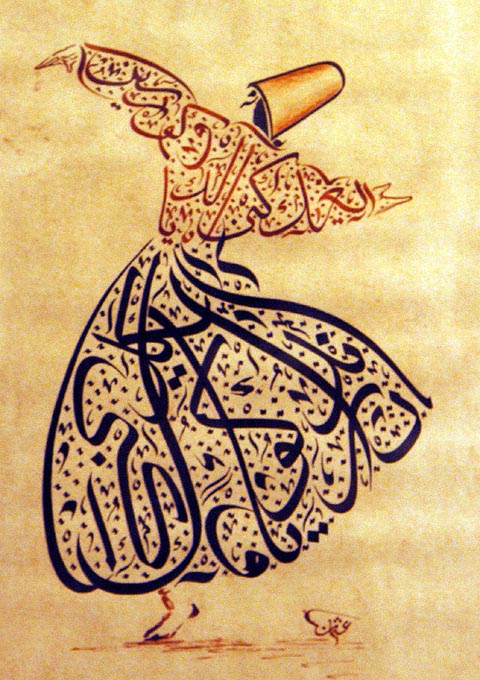FWP:
SETS == IDIOMS
CANDLE: {39,1}
GATHERINGS: {6,3}
SPEAKING: {14,4}
For background see S. R. Faruqi's choices. This verse is NOT one of his choices; I thought it was interesting and have added it myself. For more on Ghalib's unpublished verses, see the discussion in {4,8x}.
The image of the 'flame of a voice' has a strong element of synesthesia-- is it a flame (as would suit the 'candle'), or a voice (as would suit the 'hearing')? There's a lot to be said about this potent image; it's used in {147,1}, and is discussed there. A more extensive discussion is provided by Faruqi in M{472,6}.
Moreover, in the ghazal world, the eyes of beautiful ones can and do 'speak' not only without words, but even in active opposition to words; see {44,1} on collyrium as the enemy of the voice.
There's also the question of the general meaning of samaa(( as 'hearing, listening to' anything, or to any kind of music, versus its specific Sufistic meaning of listening to mystically revelatory music in a devotional setting (see the definition above).
One of the aspects of the state of ;hairat or 'amazement' (on this see {51,9x}) is that one is struck dumb and cannot find words; thus the 'mouth' has no words emerging from it, but merely a finger on it. Of course, this finger is really on the lower teeth, which are accessible because the mouth is open and the jaw dropped (thus the gesture has nothing in common with the finger-on-the-lips 'hush' gesture we know in English). For discussion, and an illustration, see {50,1}. For another angusht-e ;hairat dar dahaan , see {369x,4}.
As usual when he makes use of idioms, Ghalib has framed the verse so that both the colloquial meaning of the expression (the gathering is amazed), and the literal one (the gathering has the 'finger' of the candle on its teeth), are evoked. But in this case the literal meaning seems forced and implausible; it just doesn't work very well, so that the whole effect seems unduly contrived.
In any case, this verse that seems to be about music, or at least sound, may in fact be about silence.

Asi:
Because of the candle, the gathering seems to have a finger of amazement on its mouth, and this amazement is because of the 'hearing' of the flame of the voice of beautiful ones.
== Asi, p. 138